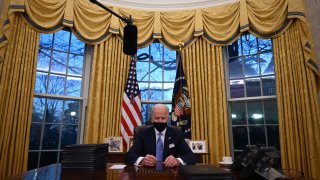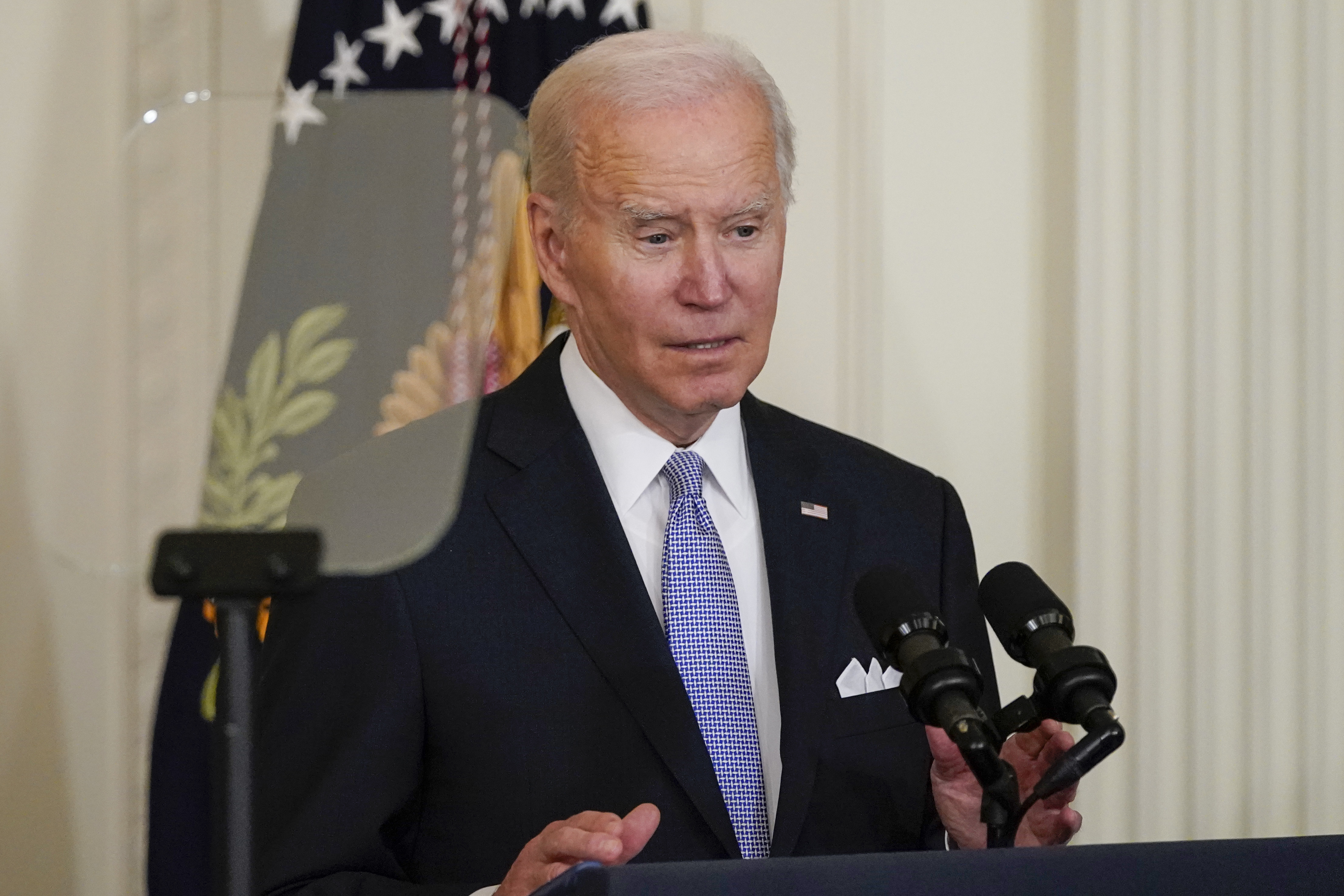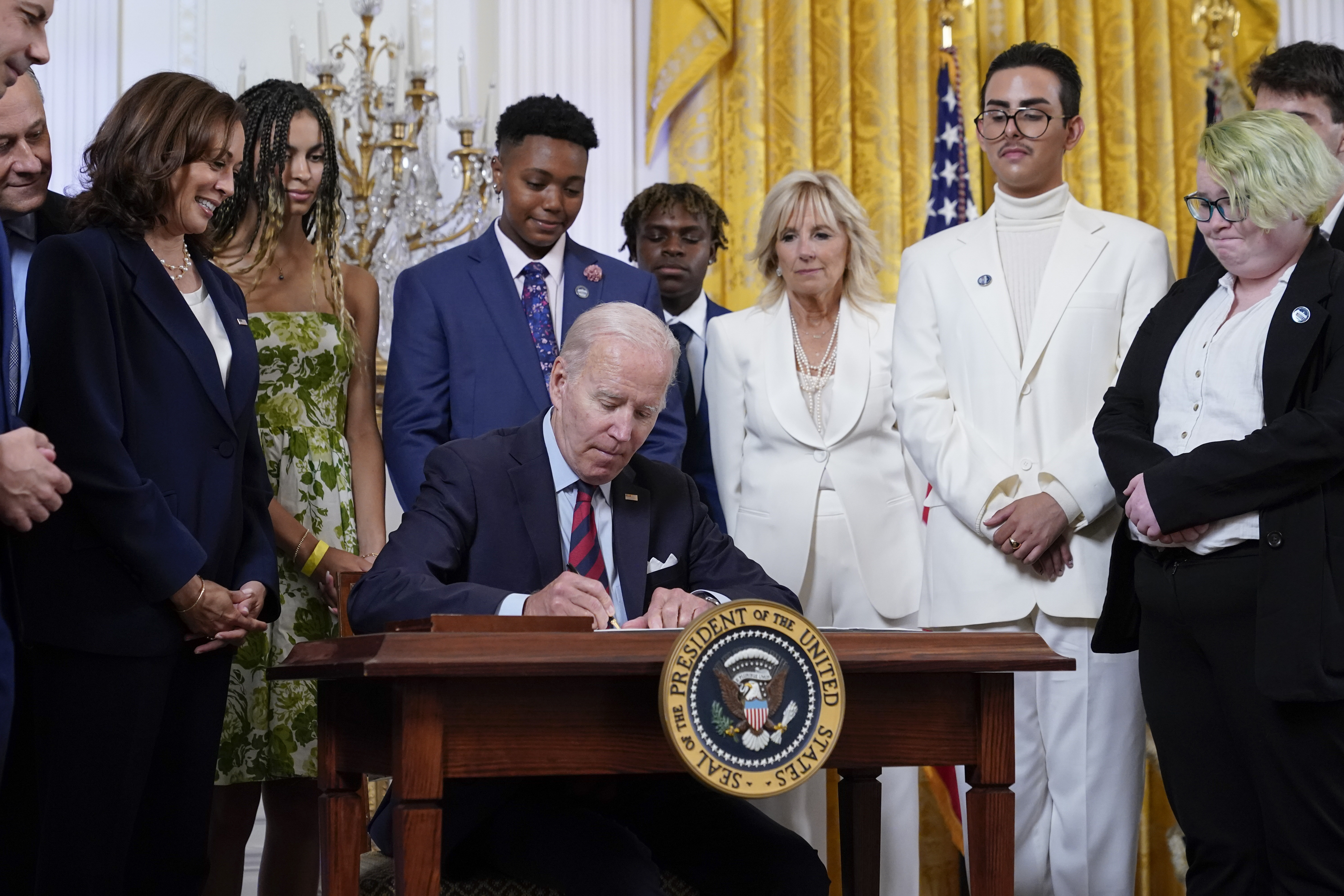
President Joe Biden took executive action Friday to protect access to abortion after the Supreme Court ended a constitutional right to the procedure last month.
Biden's executive order is intended to try to mitigate some potential penalties women seeking abortion may face after the ruling, but it's limited in its ability to safeguard access to abortion nationwide without congressional action.
“Ultimately, Congress is going to have to act to codify Roe into federal law,” Biden said.
Here's what to know about executive orders, their limitations, which president signed the most and how recent commanders in chief rank in comparison:
We're making it easier for you to find stories that matter with our new newsletter — The 4Front. Sign up here and get news that is important for you to your inbox.
WHAT IS AN EXECUTIVE ORDER?
Executive orders are official directives by the President of the United States that manages operations of the federal government and do not require approval from Congress.
Executive orders are numbered and required by law to be published in the Federal Register, the official record of actions of the U.S government.
They have the "force of law" if the topic of the executive order is "founded on the authority of the President derived from the Constitution or statute," according to the House Government Operations Committee.
HOW DO PRESIDENTS USE EXECUTIVE ORDERS?
Executive orders allow presidents to make policy outside of the regular lawmaking process.
While it is common for members of the opposing political party to characterize a president's executive orders as overstepping bounds of power, all presidents, from George Washington to Donald Trump, have used them. The exception is William Henry Harrison, who died of pneumonia after serving just one month in office.
Most of Franklin D. Roosevelt's orders were measures aimed at responding to the Great Depression or initiating wartime policy. His most controversial directive came in response to the bombing of Pearl Harbor in 1941 when he signed Executive Order 9066, creating detention centers for hundreds of thousands of Japanese Americans who were rounded up en masse and relocated to camps for the duration of World War II.
Meanwhile, some of the more famous executive orders have changed the course of history. President Abraham Lincoln's Emancipation Proclamation executive order freed slaves in the South in 1863 and both Presidents John F. Kennedy and Lyndon Johnson used executive orders to bar racial discrimination in federal housing, hiring and contracting.
CAN EXECUTIVE ORDERS BE OVERTURNED?
The impact of an executive order can be fleeting; Congress can't just pass a new law to override a president's directive, but it can cut off funding to make carrying it out impossible.
When President Barack Obama tried to use executive authority to fulfill his campaign pledge to close the U.S. military detention center at Guantanamo Bay, Cuba, Congress stymied him by voting to block funding to pay for the transfer of prisoners from Guantanamo to the U.S., including for prosecution or medical care.
Future presidents can also undo them by amending or rescinding an order from a previous president.
In Biden's first week in office, he overturned several executive orders that former President Donald Trump had signed on a broad range of issues, from climate change to immigration and racial equity.
While Biden acknowledges that executive action is a pale substitute for legislative action, he defended his heavy use of them at the start of the administration as a necessary stopgap to address the worst public health crisis in more than a century and reverse some of Trump’s policies.
WHICH PRESIDENTS HAS SIGNED THE MOST AND LEAST EXECUTIVE ORDERS?
Franklin D. Roosevelt holds the record for most executive orders in presidential history, with 3,721, while John Adams, James Madison and James Monroe are tied for least, with one each. Modern presidents have issued an average of 30 to 40 executive orders per year.



